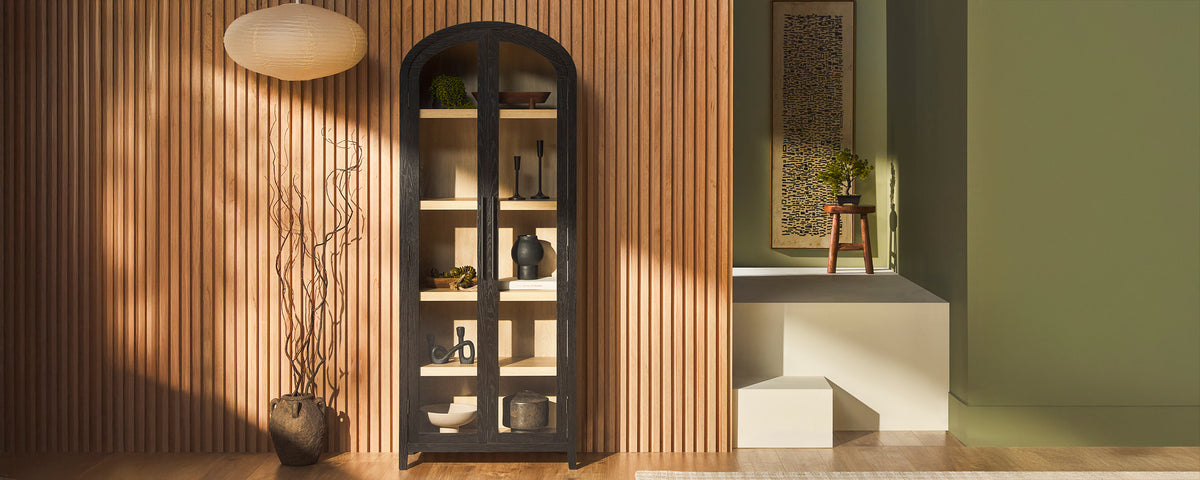Indoor Herb Gardening for Beginners – Walker Edison
If you find yourself wanting to grow your own herbs but are limited on outdoor space, you might want to consider building your own indoor herb garden instead. Although having a successful indoor garden is more than just putting potted seeds near a window, growing your own herbs doesn’t have to be complicated. For those of us who weren’t blessed with a green thumb, here are a few tips and tricks to make sure you’ve started your indoor herb garden on the right foot

1. Choose your herbs
You will get the most out of your plant-astic garden if you select herbs that will fit well into your current diet. Consider what you enjoy eating or cooking and pick the herbs that complement those dishes. Basil is a classic herb that will elevate Italian cuisine, or anything with tomatoes, mozzarella, pasta, and beef. Mint comes with a fresh kick that is followed with a cool aftertaste, which is ideal for Mediterranean cooking or for dishes that have feta cheese, yogurt, strawberries, or it can be added to fresh citrus drinks. For those who enjoy a classic British Isle roast, rosemary is the perfect companion for foods like roasted chicken, potatoes, and veggies. The earthy and lemony taste of thyme works well with soups, sauces, and braises.

2. Do your research
To achieve sup-herb growth, each plant may require different conditions from another. For example, basil lives its best life in stable climates and in soil that is continually moist, while thyme thrives in hot, dry conditions in sandy or loamy soil. You may also need to supplement the sunlight from your window with grow lights to make sure your plant babies get plenty of rays. Whatever herbs you decide to have in your indoor garden, be sure to do some research to know the unique needs of your future plant family.

3. Gather your materials
Picking out how you will organize and display your indoor herb garden is where the fun begins. Once you’ve completed your research, grab packets of seeds and seed starting mix from your local nursery or supermarket. Do you want to display your garden on a bookshelf or place each pot on a plant stand? Browse through the gardening aisles to find the materials that fit your vision. Each herb should grow in its own separate container, which gives you the opportunity to have an army of identical pots or mix and match different styles.
Grab a small hand shovel and some gloves to prevent extra messes during the planting process. Have fun picking out a watering can that works as both a way to water your herbs, and as decoration. Order some simple grow lights to assist your seedlings shortly after the germination process. Slip some liquid fertilizer into your cart for an easy boost of nutrients. Be sure to pick up some plant labels to avoid forgetting which herb baby is which.

4. Plant the seed
Now it’s thyme to create the perfect herb-itat! Begin by combining water with your seed starting mix so that it’s damp. We recommend doing this step in a small bowl to make sure the mix is moist all the way through. Fill your small pots with the moistened mixture about ¾ of the way to the top. Using your hands, tap the pots to remove any hidden air pockets.
Place 2-3 seeds in each pot. On the back of each seed packet, there should be specific instructions on how deep the seed should be planted. If you have larger seeds that need to planted deep into the soil, you can create a small hole using your finger, a toothpick, or popsicle stick. Once the seed has been covered, gently pat it down to ensure that the seed comes in contact with the moist soil. Use your labels to mark which seed was planted in which pot. Cover the pots with plastic wrap to contain the moisture necessary for germination.
After 10 to 14 days, you should start to see your little sproutlings rise from the soil. Pay close attention to when this happens, as you will need to promptly remove the plastic wrap to give your newborn plant babies the oxygen they need to continue to grow. Place the pots directly under your grow lights, roughly an inch above the top of the plants.

5. Nurture your plant babies
Like a true plant parent, keep a close watch on your herb babies’ growth. You will need to adjust the height of the grow lights as your plants increase in size. Continue to give your indoor herb garden the necessary amount of water and light for each individual plant. You may want to keep track of when you last watered or fertilized the herbs in a journal or your phone’s notes app.

6. Enjoy!
Whether you sprinkle some chives on a baked potato or put mint in a fruity drink, it’s rewarding to use your indoor herb garden to your benefit. Indoor herb plants also make for great gifts and can be easily transferred to a backyard garden for when you’re feeling advanced.
Which herbs are you going to grow in the comfort of your own home? Show us your green thumb by tagging us on Instagram @WalkerEdisonCo.


